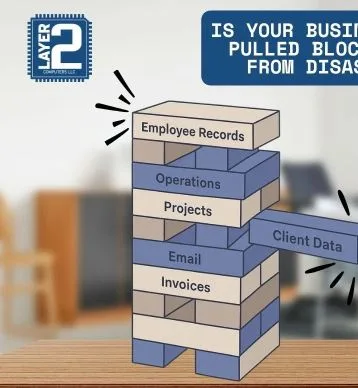Affordable Housing Trends: How Mobile Homes Are Evolving With Outdoor Living Upgrades
A Shift Toward Affordable and Adaptable Housing
Across the country, housing affordability remains one of the biggest challenges for families and individuals. Rising costs of traditional real estate, coupled with limited inventory in many areas, are prompting more people to explore alternatives. Modular and mobile homes have emerged as a viable solution, providing flexibility, lower costs, and the option to customize living spaces.
This change has transformed mobile homes into more than just a temporary choice. Increasingly, they are being designed and upgraded to resemble permanent residences, reflecting the creativity and lifestyle desires of their owners. As modular living continues to evolve, homeowners are looking beyond the essentials and investing in features that enhance comfort, improve curb appeal, and add long-term value.
Beyond the Basics: Making Mobile Homes Feel Like “Home”
For many, the attraction of modular housing lies not only in its affordability but also in its versatility. Unlike traditional homes, mobile and manufactured homes provide opportunities for gradual upgrades. Owners can begin with minor improvements and expand over time, tailoring changes that fit their budget and lifestyle.
One of the most significant changes in recent years has been the emphasis on aesthetics and outdoor living. Homeowners no longer see mobile homes as merely functional units. Instead, they aspire for them to convey the same warmth, comfort, and personality as traditional houses. This shift has sparked a surge of interest in enhancements like decks, patios, landscaped yards, and upgraded siding.
Outdoor Living: A Growing Trend
Outdoor spaces are becoming an essential part of contemporary living. The pandemic accelerated this trend, as people started to value fresh air, open spaces, and the chance to enjoy their home’s surroundings. Mobile homeowners are also investing in features that extend living areas outdoors.
Small upgrades like modest decks or retractable awnings can add both shade and versatility to an outdoor space. Landscaping improvements further enhance the overall look, giving a mobile home a more permanent and polished feel. Among the most popular enhancements are porches for mobile homes, which not only boost curb appeal but also create a welcoming entryway, extend usable living areas, and provide reliable protection from the elements. For many families, adding a porch turns a practical housing choice into a warm and comfortable home that feels rooted and enduring.
Why Porches Are More Than Cosmetic
While porches are visually appealing, their value extends beyond their aesthetic appeal. A well-built porch can have a profound impact on daily life. It provides shade in the summer, shelter from rain and snow, and a comfortable space for gathering with family or friends.
From a financial perspective, porches can boost the resale value of a mobile home. Potential buyers are more inclined to be attracted to a property that feels inviting and complete, rather than one that appears bare or unfinished. In fact, real estate experts indicate that curb appeal plays a significant role in first impressions—and porches are among the simplest yet most effective upgrades a homeowner can implement.
Key Considerations for Adding a Porch
As with any home improvement project, adding a porch necessitates thoughtful planning. Homeowners need to consider several factors, including:
- Structural support: Mobile homes may require specific reinforcements to ensure the porch is stable and secure.
- Weather conditions: Materials and design choices should align with the local climate. For instance, composite decking may perform better in regions with heavy rain, while wood may be favored for its classic appearance.
- Permitting and zoning laws: Regulations can vary significantly based on location, so consulting with local authorities is crucial before commencing construction.
- Design integration: The porch should enhance the overall appearance of the home, blending seamlessly with siding, rooflines, and other architectural features.
These considerations may seem daunting, but for many homeowners, the benefits greatly outweigh the challenges.
Real-Life Impact: Lifestyle and Community
Mobile homeowners who have added porches often express a stronger sense of pride and permanence. A porch alters how a home is used, creating space for morning coffee, outdoor dinners, or simply a quiet spot to relax. It also encourages community, providing a natural area to connect with neighbors.
In manufactured home parks, porches can create uniformity and enhance the overall appearance of the community. As more residents incorporate them, the neighborhood feels less temporary and more like a cohesive, rooted community. This, in turn, can elevate property values across the board.
Looking Ahead: The Future of Modular Living
The rise of porches, decks, and other outdoor enhancements underscores a larger trend: modular living is no longer about compromise. Instead, it emphasizes creativity and adaptability. Mobile homeowners are demonstrating that affordable housing doesn’t have to mean sacrificing comfort or style.
As more individuals explore modular housing options, we can anticipate even greater innovation in design and functionality. From energy-efficient upgrades to smart home integrations, mobile living is becoming increasingly sophisticated. And with the addition of impactful yet straightforward features like porches, these homes are evolving from temporary solutions into long-term investments.
Final Thoughts
The appeal of modular and mobile homes continues to expand, driven by affordability and flexibility. But it’s the enhancements—especially in outdoor spaces—that are reshaping how people view these homes. By investing in thoughtful improvements, such as porches, mobile homeowners are creating residences that blend practicality with charm.
Ultimately, these upgrades represent more than just a design choice. They reflect a broader movement toward affordable, adaptable, and community-focused living—a trend that’s transforming the future of housing.





